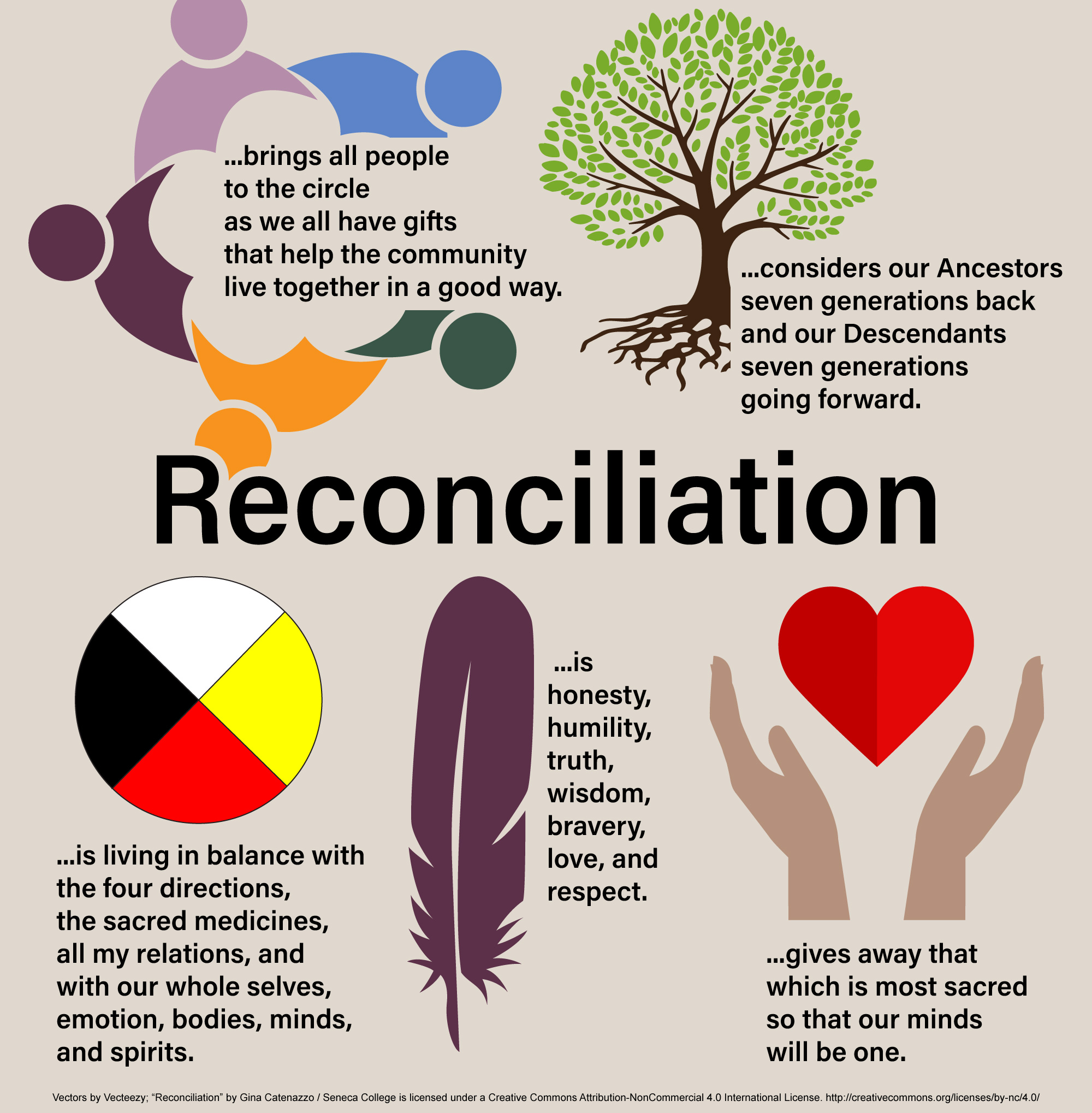Reconciliation
We began Skoden with a discussion about reconciliation, and now we circle back to reconciliation once again. Watch: What is reconciliation? Indigenous educators have their say.
As you view the video, consider what you can do to ensure non-Indigenous people do not turn away from knowing the truth and that we hold one another accountable to working towards justice.
Murray Sinclair, Chair of the Truth and Reconciliation Commission, consistently points to education as the route to reconciliation. Watch: Murray Sinclair What is Reconciliation?
As you view the video, consider what you can do today to help educate others in ways that will lead toward reconciliation between Indigenous and non-Indigenous people?
Post-secondary institutions are uniquely positioned to help Canadians unlearn the racist stereotypes and untruths systemically embedded in society and blatantly taught in schools for decades. We are also uniquely positioned to provide a new narrative, a true narrative of our history and its consequences. The truth telling though, needs to be coupled with Indigenous Teachings that provide us with hope and new possibilities.

Infographic Description : Reconciliation
Reconciliation brings all people to the circle as we all have gifts that help the community live together in a good way.
Reconciliation considers our Ancestors seven generations back and our Descendants seven generations going forward.
Reconciliation is living in balance with the four directions, the sacred medicines, all my relations, and with our whole selves, emotion, bodies, minds, and spirits.
Reconciliation is honesty, humility, truth, wisdom, bravery, love, and respect.
Reconciliation gives away that which is most sacred so that our minds will be one.

